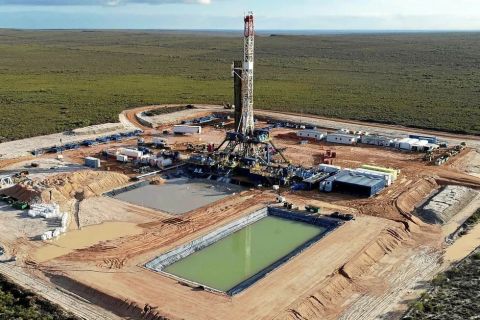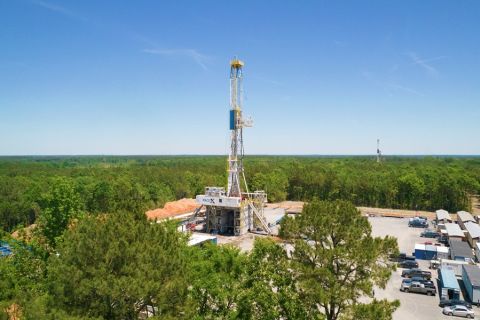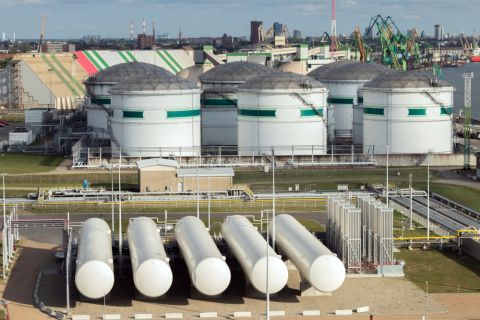
Petrobras remains the dominant player in Brazil’s oil and gas industry. (Alf Ribeiro/Shutterstock.com)
Opinions expressed by contributors are their own.
Latin America’s top producer is going through a major revamp of its oil industry. Following former president Dilma Rousseff’s impeachment in April 2016, President Michel Temer has put forth a bullish agenda to lure foreign investment into highly prospective offshore areas.
On top of that, Petrobras is no longer required to have a 30% stake in deepwater presalt projects, which was once a rock in the shoe for international oil companies wanting in on deepwater reserves. Now, there’s room opening up for already established majors and newcomers to have a go at the world-acclaimed oil region.
After the success of the Sept. 14 licensing round, where ExxonMobil led the show with Petrobras, the industry’s crosshairs are on Brazil again.
Though exploratory activity has decreased and production has remained practically unchanged for some time now, a new and aggressive set of tenders envisions turning around stagnant prospects. A two-year calendar has already been proposed through 2019, Decio Oddone, director feneral for Brazil’s National Petroleum Institute (ANP), said in a recent presentation. A complete five-year agenda with specific areas should be released by year-end 2017, he said.
Two major rounds—the 15th and 16th—are scheduled for May 2018 and third-quarter 2019, respectively. Additionally, four production-sharing contract rounds with 18 presalt areas and two mature onshore tenders will be up for grabs through 2021.
Petrobras, however, is still the dominant player in Brazil’s oil and gas industry as the firm pumps out over two-thirds of country’s total production. Nevertheless, recent deals with Statoil and Shell are signaling a major repositioning, and Petrobras could be radically redefined in only a few years’ time if the right buyer shows up.
On Oct. 2, Brazil’s Mines and Energy Minister Fernando Coelho Filho told local media that Petrobras, the world’s most indebted major oil company, could soon be up for sale. “I think it is going to happen,” he said. However, Reuters reported Oct. 3 that Coelho Filho said the Temer administration is not planning to privatize state-controlled Petrobras. “We are not dealing with that at this time. We are currently focused on [the sale of] Eletrobras,” he told reporters, referring to the state-controlled power sector holding company, Centrais Elétricas Brasileiras SA.
In a television interview on the night of Oct. 2, Coelho Filho said the privatization of Petrobras would be feasible in the long run.
Today, about half of Brazil’s total production comes from the presalt. Production, however, “does not reflect the potential that [Brazil] has,” Oddone said during the presentation.
And Santos Basin, which did not receive many offers in the latest round unlike Campos and has an average production of 30,000 barrels per day (bbl/d), is still underdeveloped, according to analysts.
Additionally, there are plenty resources for other majors to take home as an oil rights sale is expected after Petrobras finishes renegotiating with government its 5 billion barrels located in six areas at the Santos Basin.
Besides prospectivity in presalt reservoirs, the ANP’s so-called East Margin boasts almost 1.45 million sq km of potential shallow and deepwater acreage off Brazil’s southernmost state of Rio Grande do Sul up to Rio Grande do Norte in the Atlantic. Most of the oil potential lies on turbidite reservoirs from the Upper Cretaceous to the Paleogene, according to Oddone’s presentation. Plus, the Equatorial Margin, which covers Brazil’s northernmost states up to the maritime border with French Guyana, holds Cretaceous potential. Nearly 140 fields have been discovered in these two offshore regions.
Local content requirements, which until recently were considered among the highest by industry in the continent, are no longer among bidding criteria and have been reduced, which will usher greater flexibility for new companies when managing E&P targets in their portfolio of projects. With that, operating costs should drop significantly and thus improve project potential and profitability.
Apart from reworking Petrobras, the government expects a total of $271 billion through 2027 for development efforts at current contractual areas as well as new blocks to be awarded, where over 40 production platforms are envisioned to operate throughout the country. On top of that, $80 billion should make their way into the Brazil’s oil and gas industry as direct investments, resulting in an increase of 2 MMbbl/d about 10years from now, according to ANP’s presentation.
Bringing in investment in the short term is key for Brazil’s severed oil and gas industry. Extending exploration phases for the 11th and 12th round acreage awarded, streamlining contracts and environmental licensing processes as well as reducing royalties are just a few strategies the government has to secure industry interest.
Brazil aspires to incentivize E&P activity in the medium to long term by overhauling regulation and offering previously deserted and relinquished blocks. However, such is yet to be seen, as the current political landscape and upcoming elections could reshuffle the business environment moving forward. Selling Petrobras—a topic that still shakes up patriotic sentiments for Brazilians—could make or break investments, if that happens.
Recommended Reading
Triangle Energy, JV Set to Drill in North Perth Basin
2024-04-18 - The Booth-1 prospect is planned to be the first well in the joint venture’s —Triangle Energy, Strike Energy and New Zealand Oil and Gas — upcoming drilling campaign.
The Answer to Curbing Permian Associated Gas? More M&A
2024-04-03 - Consolidation will result in less oil production, and therefore less associated gas, as fewer wells are produced, an energy analyst says.
An Untapped Haynesville Block: Chevron Asset Attracts High Interest
2024-04-03 - Chevron’s 72,000-net-acre property in Panola County, Texas is lightly developed for the underlying Haynesville formation — and the supermajor may cut it loose.
‘Unexpected’ JV to Move Permian NatGas to Gulf Coast LNG Terminals
2024-03-26 - A trio of midstream companies—Enbridge, Whitewater and MPLX—will work together to build infrastructure to transport Permian Basin natural gas to Gulf Coast LNG terminals.
Which Haynesville E&Ps Might Bid for Tellurian’s Upstream Assets?
2024-02-12 - As Haynesville E&Ps look to add scale and get ahead of growing LNG export capacity, Tellurian’s Louisiana assets are expected to fetch strong competition, according to Energy Advisors Group.






